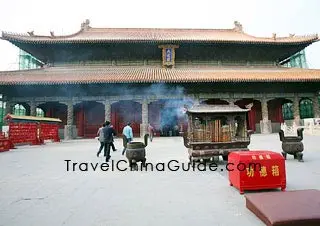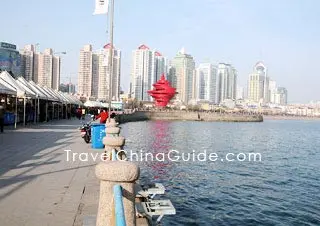Shandong Travel Guide
Shandong Facts
Chinese Name: 山东 (shān dōng)
Abbreviation: Lu
Population: 100,702,100
Area: 158,000 square kilometers (61,004 square miles)
Location: in the east of China
Administrative Division: 16 cities (Jinan, Qingdao, Zibo, Zaozhuang, Dongying, Yantai, Weifang, Jining, Tai’an, Weihai. Rizhao, Linyi, Dezhou, Liaocheng, Binzhou, Heze); 57 districts; 27 county-level cities; 53 counties
GDP (2019): CNY 7,106.75 billion (USD 1,030.11 billion) ![]() Shandong Weather
Shandong Weather
China’s Ancient Culture Center & Origin of Confucianism
Shandong is the northernmost province in eastern China on the lower reaches of the Yellow River. It borders Hebei, Henan, Anhui and Jiangsu respectively from north to south, close to Bohai and Huanghai seas to the east and overlooks the Korean Peninsula and the Japan Archipelago across a vast stretch of sea.
Shandong is one of the ancient Chinese culture centers. Confucius once developed Confucianism in Shandong, which is the cornerstone of China's culture and has been spread around the world. You can learn about Confucius' life and culture theory in the Temple of Confucius in Qufu which is an ancient architectural complex second only to the Forbidden City in Beijing. The charming legends and historical stories cover the mountains of Shandong with a layer of mysterious veil. The Taishan Moutain was regarded as the holy place where many emperors offered sacrifices to heaven and Laoshan Mountain was said to be the home of immortals.
Also, Shandong boasts long coastlines and fancy views in Jaodong peninsula, a wonderful place to avoid summer heat and taste fresh sea food. Shandong cuisine famous at home and abroad for its fresh, salty, crisp and tender taste is also a must-try.
When to Go
The Province is frequently affected by marine monsoons, especially during the summer time. The climate is characterized by rain during the summer and autumn and a dry winter. The annual average temperature is between 11 and 14 degrees Centigrade while the annual precipitation is mostly affected by the monsoon rain. Between 500 millimeters and 1000 millimeters of rain can fall each year.
Cities in Shandong
History
Shandong, with a history of more than 5,000 years, is considered one of the birthplaces of Chinese civilization. It has also been the home of a large number of historical figures, whose important influences are still evident in contemporary China. Confucianism, founded by Confucius, the great thinker, educator and statesman is the pillar of traditional Chinese culture and has exerted great influence in the world.
What to See
 |
| Confucius Temple, Qufu |
The major historical sites in the Province are:
The inscriptions on clay pots unearthed at Dawenkou and Dinggongcun are believed to bear the earliest written language of the country.
The ruins of ancient Longshan City which is considered the earliest city in the country.
Portions of the Great Wall built during the Qi State period which is believed to be the most ancient great wall in the country.
The Confucius Temple, Confucius Mansion and Confucius Cemetery in Qufu.
Shandong is also blessed with beautiful landscapes. The most famous scenic spots are Taishan Mountain, Mt. Laoshan and the seaside of the Jiaodong peninsula. In 1987 and 1994, Taishan Mountain, the Temple and Cemetery of Confucius and the Confucius Mansion in Qufu were inscribed on the World Cultural and Natural Heritage List by UNESCO.
Jinan, its capital city, is one of China's most famous historical and cultural cities. It has numerous natural springs, hence its name 'Spring City'.
Shandong Province is also considered the birthplace of China's pottery, porcelain and silk. Throughout the province the tourist can find traditional items like the clocks and watches of Yantai, the porcelain of Zibo, the kites of Weifang, the shell-carving and beer of Qingdao.
|
|
![]() Recommended Tour Itineraries:
Recommended Tour Itineraries:
Jinan - Qufu - Mt. Tai: 4 days visit to Shandong from Jinan to the hometown of Confucius and Mt. Tai
Qingdao Mt. Laoshan Tour: 3 days to visit Mt. Laoshan, Small Qingdao Island, Zhan Bridge and No. 1 Bathing Beach
More China Tour Packages
Read More:
Shandong Cuisine – No. 1 of 8 Great Cuisines of China

